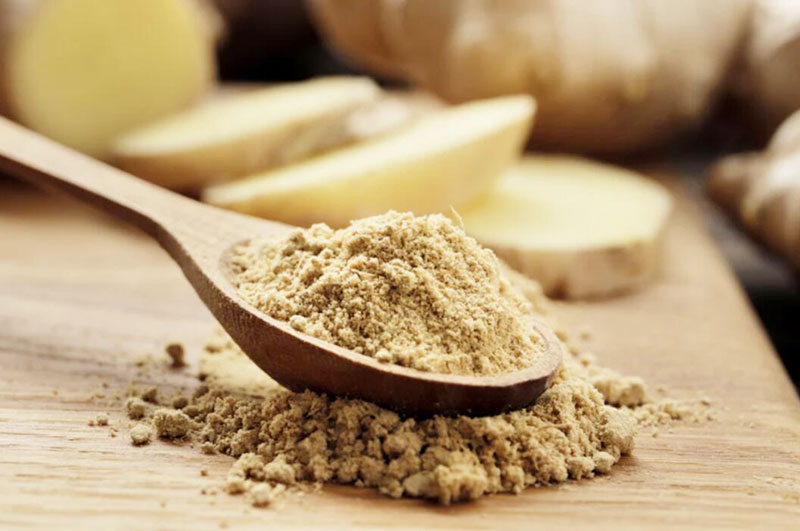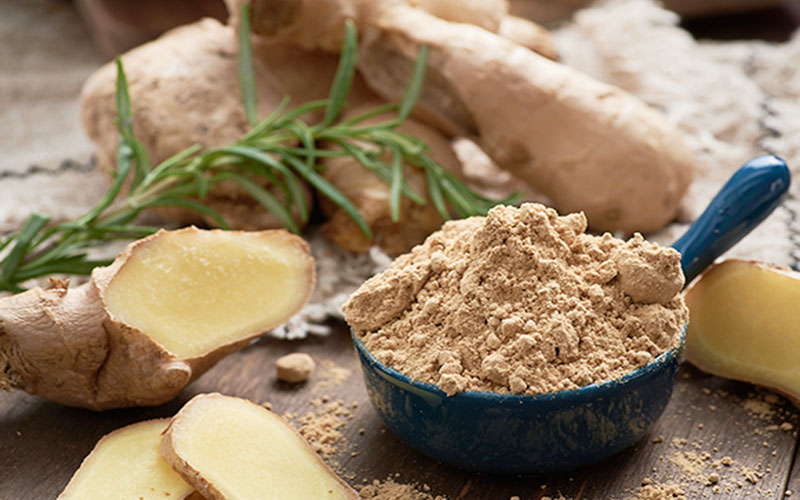Ginger powder is a versatile spice used globally in food, beverages, and supplements. For manufacturers, optimizing the ginger powder production line ensures high quality, nutrient retention, and profitability. Here’s a science-backed breakdown of the industrial process.

Industrial Ginger Powder Production Step-by-Step
Raw Material Selection & Pre-treatment
Fresh ginger roots are sorted for firmness and absence of soft spots. They undergo:
غسل: Removal of soil and debris.
Peeling: Mechanical or manual scraping (edge-of-spoon method is common for minimal waste) .
Slicing: Cutting into 1–3 mm uniform slices for even drying .
Drying: The Core of Quality Control
Drying reduces moisture to prevent microbial growth. Industrial methods include:
Heated-Air Drying: 60–80°C; yields powder with excellent hydratability but moderate density.
Far-Infrared (FIR) Drying: Maximizes yield and density; superior oil-absorption and sensory quality.
Spray-Drying: High density but lower yield and nutrient retention.
Vacuum Freeze-Drying: Best for color, flavor, and oil-absorption—ideal for premium products.
Home alternative: Thin slices air-fried at 70°C for 20–30 minutes achieve brittle texture.
Grinding & Particle Size Optimization
Dried ginger is ground sequentially:
Coarse Crushing: Hammer mills reduce slices to 20–30 mesh particles.
Ultra-Fine Grinding: Cellulose structure is disrupted using gear-based pulverizers (e.g., 4,200-rpm SUS304 grinders) to achieve 8–120 mesh powder.
Sieving: Particles pass through 120-mesh sieves; larger chunks are reground.
Key science: Finer particles (≤10 μm) increase crystallinity and bioactivity but require energy-intensive processing.
Mixing & Fortification (Optional)
For functional blends (e.g., breakfast powders), ginger powder is mixed with:
Carriers like maltodextrin.
Nutrients (vitamin C for anti-browning).
Prebiotics (fructooligosaccharides) for gut-health applications.
Packaging & Storage
Powder is stored in airtight foil bags or cardboard bins (25 kg capacity) at 15–25°C. Critical safeguards:
Moisture-proofing to prevent clumping.
Protection from light to preserve gingerols.
Ginger Powder Production Line Key Machine
A commercial setup typically includes:
Washer-Peelers: Water-jet systems.
Slicers: Adjustable to 1–5 mm thickness.
Dryers: FIR tunnels or freeze-dryers.
Grinders: High-speed SUS304 micro-pulverizers (2.2 kW motors; 0–4,200 rpm).
Packagers: Automated filling-sealing units.
Cost note: Semi-automatic lines (10–120 kg/hour) start at $1,350/set.
Quality Challenges & Solutions
Browning: Add 0.3‰ ascorbic acid during mixing.
Flavor Loss: FIR drying retains 30% more volatile oils than spray-drying.
Clumping: Cool slices to room temperature pre-grinding.
Ginger Powder Applications: Beyond Spice Racks
Food: Bakery blends, sauces (e.g., ginger jam with CMC-thickeners).
Beverages: Functional drinks (ginger-vinegar yogurt).
Health Products: Oral compositions with phenols for anti-inflammatory benefits.
FAQs: Ginger Powder Production
Can small-scale producers use affordable dryers?
Yes! Ovens at 70°C (3–4 hours) substitute industrial dryers. Test dryness by snapping cooled slices—no bend means fully dehydrated.
Why does particle size matter?
Sub-37 μm powder has higher crystallinity, boosting antioxidant release in beverages.
How long does ginger powder last?
Shelf life is 24 months in sealed containers at ≤60% humidity.
The Future: Efficiency Meets Demand
Advancements like AI-optimized drying and ultra-fine grinding (≤5 μm) will expand ginger powder into nutraceuticals. For manufacturers, investing in FIR or freeze-drying lines balances quality and scalability—critical for exporting high-margin products.
Pro Tip: Blend ginger powder with black rice or ginkgo extracts to target the $12B elder-nutrition market
Conclusion
From careful raw ginger selection to advanced drying and ultra-fine grinding techniques, every stage of the ginger powder production line plays a critical role in delivering high-quality, nutrient-rich powder that meets diverse market needs. Whether you aim to serve the food industry, beverage innovators, or health product manufacturers, optimizing each process ensures better flavor retention, functional value, and shelf stability.
By investing in the right equipment, controlling key variables like moisture and particle size, and staying informed on emerging trends (like elder nutrition), your business can confidently compete in a growing global market.
💬 Have questions or experiences to share about ginger powder production? Leave us a comment below—we’d love to hear from you!
📢 If this guide was helpful, don’t forget to share or forward it to your colleagues and partners in the spice or health product industry!





